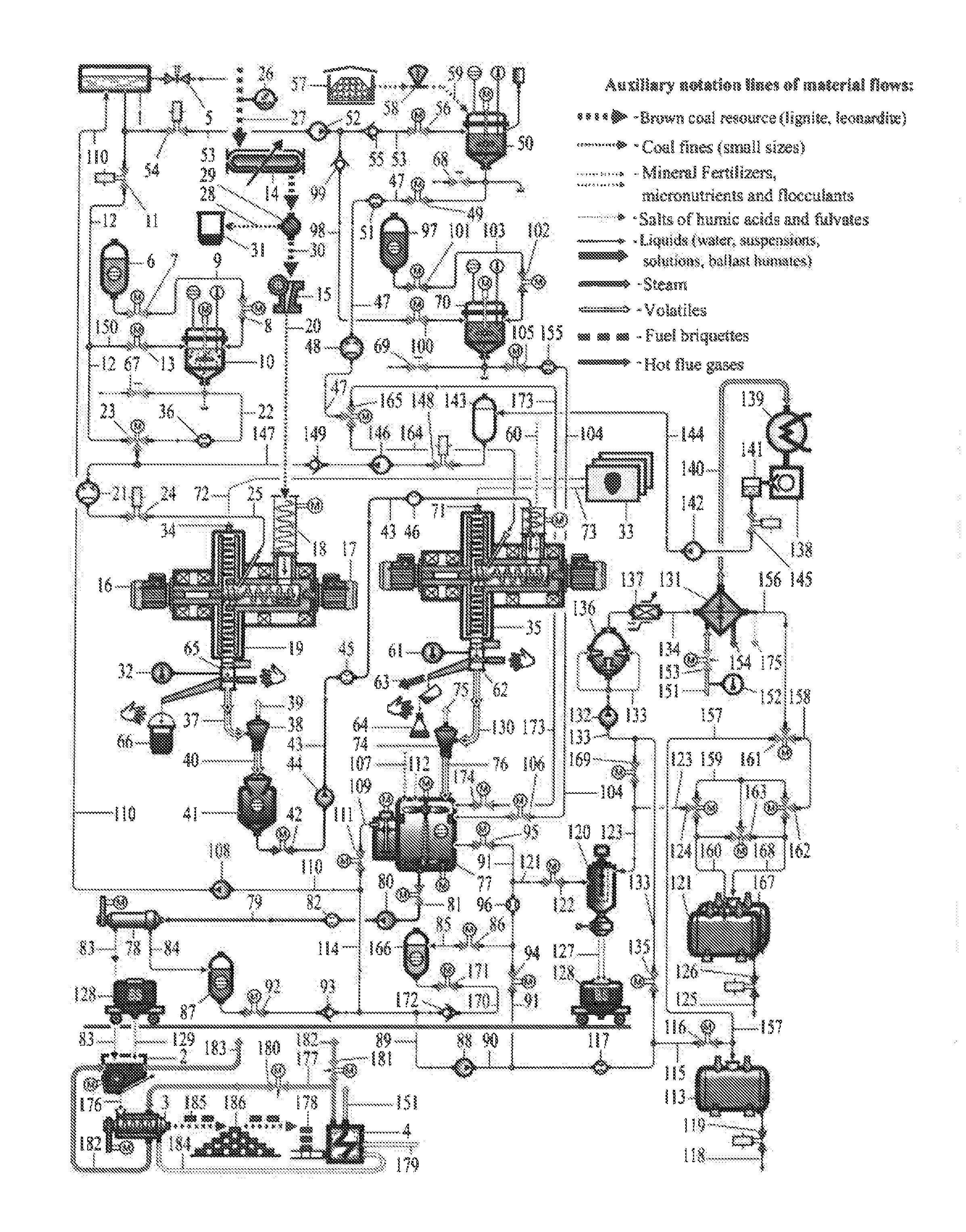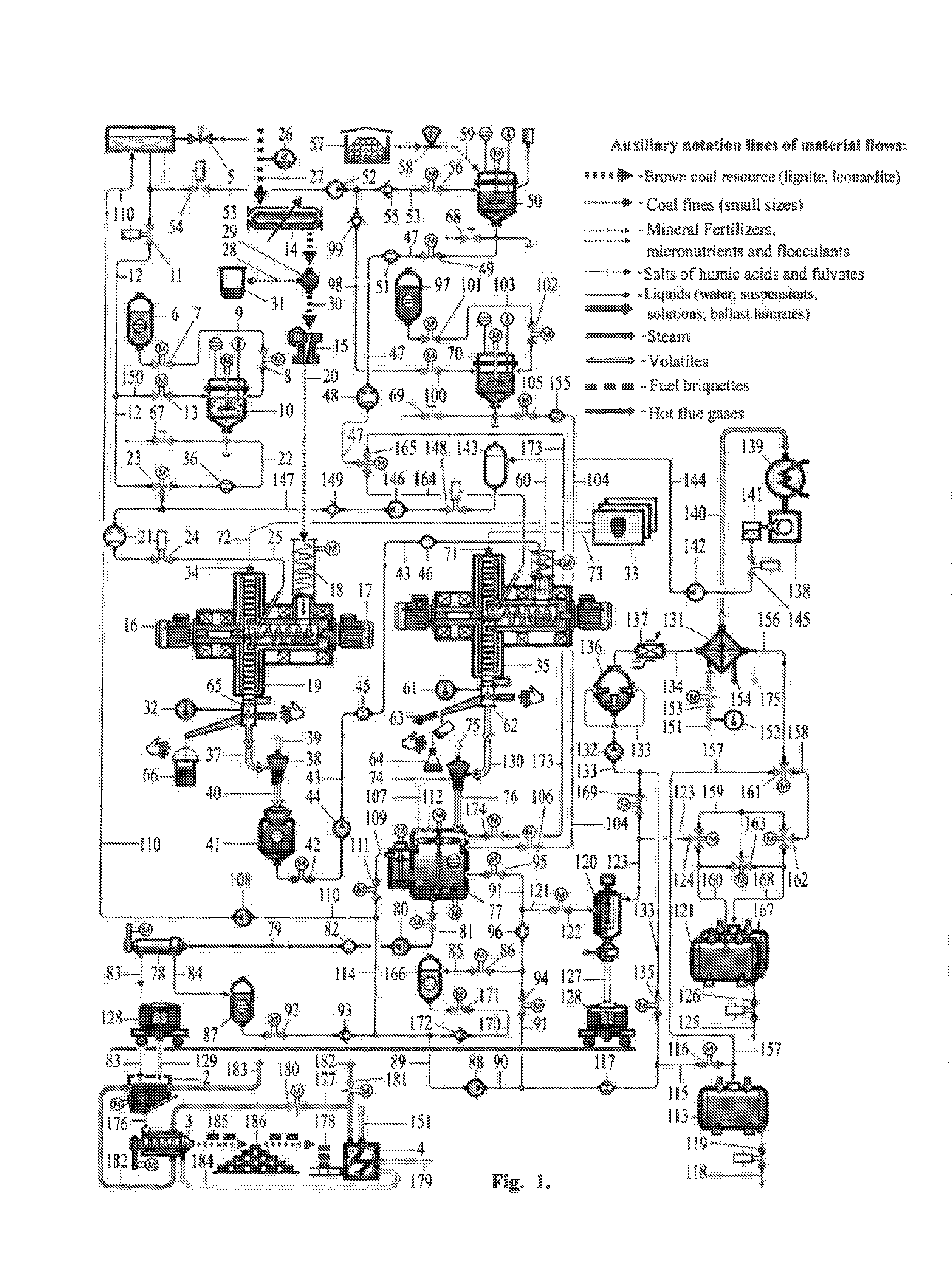Method for comprehensively processing brown coal and leonardite into humic fertilizers and preparations and into fuel briquettes, and mechanochemical reactor for processing highly-viscous media
a technology of brown coal and leonardite, which is applied in the field of conversion of coal series caustoliths, to achieve the effect of increasing the reliability of operation and preventing rotor jamming
- Summary
- Abstract
- Description
- Claims
- Application Information
AI Technical Summary
Benefits of technology
Problems solved by technology
Method used
Image
Examples
Embodiment Construction
[0492]The embodiment of the invention based on the method of comprehensive conversion of coal series caustobioliths, mostly brown coals and leonardite, into humic organic and organomineral fertilizers and into preparations with the recovery of salts and fuel briquettes is illustrated by the process flow diagram in FIG. 1. THREE SYSTEMS ARE REPRESENTED structurally in this flow diagram: the water treatment and desalination system 1, the fuel briquette preparation and process heat generation system is represented by heat dryer 2, screw extruder 33 and boiler 4, and the PROCESS SYSTEM of comprehensive COAL SERIES CAUSTOBIOLITH CONVERSION itself is represented in detail.
[0493]According to the presented method, THE MANUFACTURING PROCESS OF BALLAST ORGANIC or ORGANOMINERAL FERTILIZERS as a product in the form of suspended gels is performed as follows.
[0494]Water treatment and desalination system 1 is fed with water through damper 5 from an external water supply system. Based on the perfor...
PUM
| Property | Measurement | Unit |
|---|---|---|
| temperature | aaaaa | aaaaa |
| pressure | aaaaa | aaaaa |
| temperature | aaaaa | aaaaa |
Abstract
Description
Claims
Application Information
 Login to View More
Login to View More - R&D
- Intellectual Property
- Life Sciences
- Materials
- Tech Scout
- Unparalleled Data Quality
- Higher Quality Content
- 60% Fewer Hallucinations
Browse by: Latest US Patents, China's latest patents, Technical Efficacy Thesaurus, Application Domain, Technology Topic, Popular Technical Reports.
© 2025 PatSnap. All rights reserved.Legal|Privacy policy|Modern Slavery Act Transparency Statement|Sitemap|About US| Contact US: help@patsnap.com



